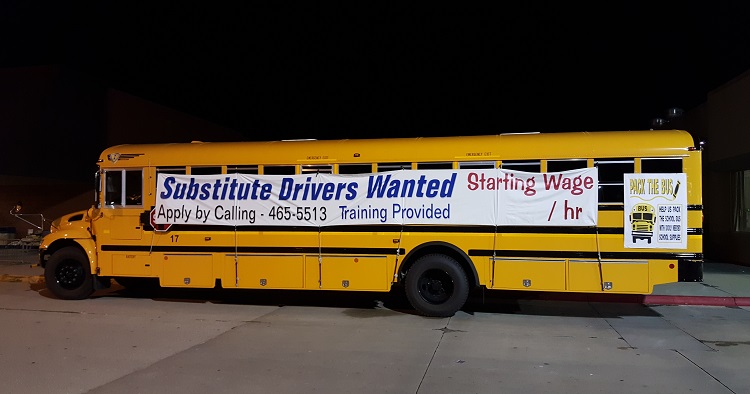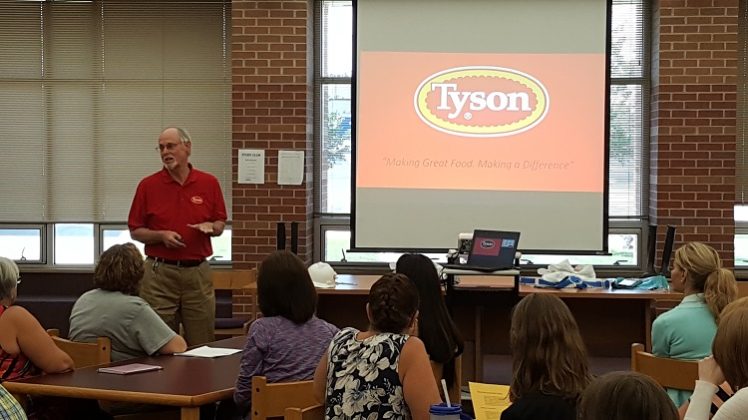
With 16 new educators this year joining the 140-strong ranks of the Perry Community School District teaching staff, some orientation to the unique qualities of the Perry student body is called for, and the call was answered Thursday by means of three multicultural breakout sessions held at the Perry High School and Perry Middle School.
The sessions were designed to inform the new teachers and remind returning teachers of the wide range of racial and ethnic diversity within Perry’s 1,700-student population and examine the challenges and opportunities of a diverse school system.

Terry Wilkinson, chaplain at the Tyson Fresh Meats packing plant near Perry, led one breakout session.
With about 1,050 employees, Tyson is the largest employer in Dallas County outside the metro’s western suburbs, and the packinghouse has had a big influence on the demographics of Perry and Perry’s schools for more than a generation.
According to Wilkinson, about 900 of Tyson’s Perry employees are “minorities,” with 300 each of Africans, Asians, and Hispanics. He said the minority workers come from some 20 countries and speak a dozen languages.
About 520 minority workers commute daily from Des Moines, and the rest live in Perry or the surrounding area.
The Perry Community School District’s demographics differ from Tyson’s. The student population during the 2014-2015 year was 49 percent Hispanic, 45 percent white, 3 percent black, 0.7 percent Asian-Pacific Islander and 0.5 percent Native American, according to statistics of the Iowa Department of Education.
Of the 1,776 students enrolled that year, 5.3 percent — 90 students — were immigrants with limited English language skills.
A student population with English skills differing widely is one consequence of racial and ethnic diversity. Addressing the needs of English language learners (ELL) in a Thursday breakout session was Dr. Jobi Lawrence, Title III director for the Iowa Department of Education.

The U.S. Department of Education’s Title III program gives federal dollars to states and school districts in order to teach English to limited English proficient (LEP) students, including immigrant students, and to help them reach the same academic goals expected of all students.
The federal funds are used for developing curricula for LEP classes, training ELL teachers and supporting tutoring. Other uses of Title III funds include community participation programs, family literacy services and parent outreach and training.
School districts that see a significant increase in their immigrant student populations compared to the previous two-year period are eligible for funds earmarked for services for immigrant students.
Lawrence shared some practical exercises with the PCSD teachers to sharpen their skills and sensitivities in working with LEP students. In the 2015-2016 school year, 381 students in the Perry school district — 23.5 percent — qualified as LEP. By contrast, ADM had a 0.2 percent LEP rate, W-G a 0.5 percent rate, DC-G a 0.9 percent, Adair-Casey 0.0 percent and so on.

In the third breakout session, the experience of LEP immigrant students was put in concrete terms by Amy Doyle, legal advocacy director with EMBARC, the Ethic Minorities of Burma Advocacy and Resource Center.
Doyle presented a thumbnail version of the history and culture of the people of Burma or, as the ruling military regime prefers to call it, Myanmar. The country is composed of 51 million people in eight major ethnic groups. More than 100 languages are spoken.
Iowa is home to 7,000 to 10,000 Burmese refugees, according to Doyle. About 5,000 live in Polk County. In Perry Tyson Fresh Meats is aware of seven Burmese families and 22 single individuals, according to Wilkinson.
The shock to a Burmese person’s senses in rapidly moving — often in a two-week whirlwind process, according to Doyle — from a less developed country of subsistence farming to the high-tech modernity found in Perry has powerful effects, including on Burmese students’ performance in school.
While about one-fourth of Perry’s students have limited English proficiency, about three-fourths have limited economic power. In the 2015-2016 year, 74 percent on the district’s students qualified for free and reduced-price breakfasts and lunches, according to guidelines of the U.S. Department of Agriculture’s National School Lunch and National School Breakfast programs.
Keep the Perry-area news coming with a $5-per-month donation to ThePerryNews.com. To get started, simply click the Paypal link below.



















